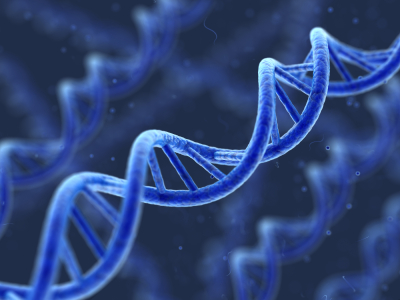Rapid gene sequencing technology will give medical laboratories a new diagnostic tool
Rapidly-evolving molecular diagnostics technology is about to trigger a major expansion in pre-conception genetic testing. In turn, this could benefit clinical laboratories and pathology groups as they begin to offer these genetic tests to help prospective parents screen their DNA for recessive gene mutations that cause 448 deadly childhood diseases in offspring.
This breakthrough medical laboratory test delivers two important benefits. First, as a universal carrier screening test, this multiplex assay greatly expands the number of diseases that can be screened at one time. Second, its next-generation sequencing (NGS) technology dramatically reduces the cost of genetic sequencing. Instead of thousands of dollars, this test only costs about $400!

Rapid gene sequencing technology will give medical laboratories a new diagnostic tool
Researchers with the New Mexico-based National Center for Genome Resources (NCGR) revealed their recent success in an article titled “Carrier Testing for Severe Childhood Recessive Diseases by Next-Generation Sequencing.” This paper was published in the peer-reviewed journal Science Translational Medicine.
Using Medical Lab Tests to Reduce the Incidence of Severe Childhood Disorders
Recessive Mendelian disorders, such as cystic fibrosis and Tay-Sacks disease are responsible for about 20% of all infant mortalities each year. However, until recently, pre-conception genetic screening was only recommended for prospective parents that came from certain ancestries. Probably the best-known example is genetic screening of Eastern European Jews, who are at increased risk for Tay-Sachs. NCGR scientists aim to change all that.
“We want this test to become available in the same way Tay-Sachs and cystic-fibrosis testing has,” said the study’s senior author, Dr. Stephen Kingsmore, Chief Science Officer, NCGR, in a Technology Review article.
“Forty years of experience with Tay-Sachs resulted in that awful disorder becoming pretty much eradicated in North America. This is just on a grander scale,” Kingsmore concluded.
According to Kingsmore, unlike genetic sequencing tests that rely on DNA microarrays to detect known genetic mutations, this new genetic test reads 2 million letters of DNA and notes all of the variations in disease-linked genes—even those not recognized by current DNA databases. That capability makes this pathology test more useful diagnostically than other DNA sequencing tests.
“This represents an important milestone in reducing the number of children and families affected by these devastating illnesses,” declared Kingsmore, in an NCGR press release. “This is a practical example of recent improvements in the cost/benefit ratio of genome analysis. Advances in gene sequencing will continue to provide new tests and tools for medical professionals, in this case, to reduce the prevalence of severe childhood illness.
“In this study of more than 100 subjects,” Kingsmore continued, “the test identified mutations from known carriers with a sensitivity and specificity of greater than 95%, and also resulted in the discovery of previously uncharacterized mutations that likely cause disease.”
Pathology Labs Can Expect Requests for Genetic Tests to Increase
The NCGR scientists enthusiastically assert that this next-generation sequencing technology, with its substantial reduction in the cost of pre-conception genetic screening, and its dramatic increase in accuracy will likely make it possible for new clinical guidelines to be issued. These guidelines would recommend pre-conception genetic screening for all perspective parents.
Kingsmore and his colleagues are not stopping at a genetic test that can identify 448 conditions. “Over the next six months we’ll be taking the number up to 580 conditions,” said Kingsmore in a National Public Radio (NPR) interview, “at which point we’ll have represented just about every childhood disease that’s severe enough to merit inclusion.”
Funding for the research came through collaboration with Austin, Texas-based Beyond Batten Disease Foundation (BBDF). Craig and Charlotte Benson founded the non-profit organization after their daughter Christiane was diagnosed with the neurodegenerative disorder in 2008.
What will be of interest to pathologists and clinical laboratory managers is that testing of this new genetic sequencing technology has progressed to clinical labs. This is a necessary prelude to applying for Food and Drug Administration (FDA) approval. Kingsmore expects that other researchers will be able to work with this gene sequencing test by the summer of 2011.
This breakthrough in pre-conception genetic testing is just the latest example of how researchers are combining knowledge of the human genome with latest-generation gene sequencing technologies to produce a clinical pathology laboratory test that gives physicians a new tool for diagnosing disease. It also illustrates how a rather limited field of laboratory medicine can be rapidly expanded when a breakthrough molecular diagnostic assay is ready for use in clinical settings.
—Michael McBride
Related Information:
National Center for Genome Resources Press Release
A Test for 400 Inherited Diseases
Science Translational Medicine, January 12, 2011, Vol. 3, Issue 65
New Genetic Test Screens Would-Be Parents
THE DARK REPORT: Genetic Testing Genie Is Now Out of the Bottle



